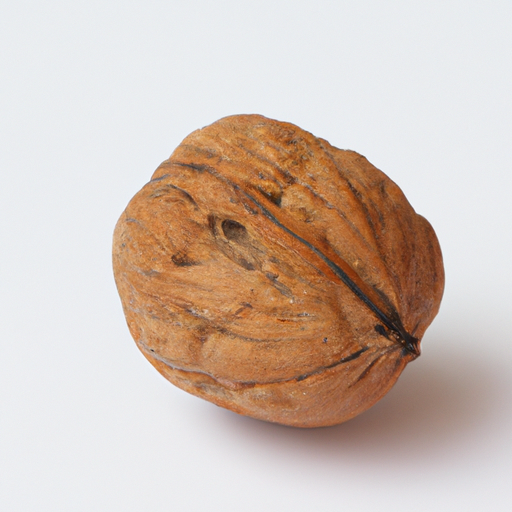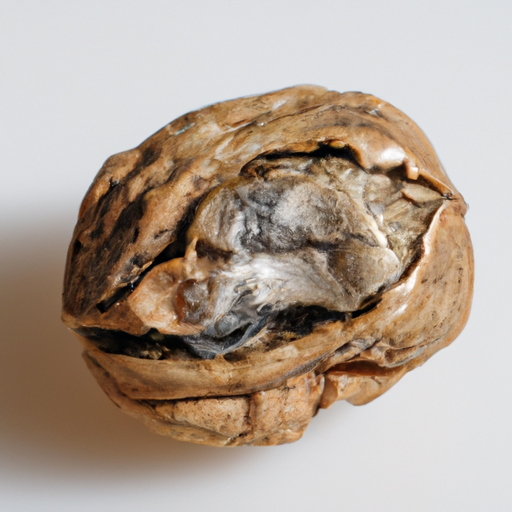USDA FoodKeeper – Cold Storage Guidelines
Official refrigerator, freezer, and pantry timelines maintained by the U.S. Department of Agriculture.
Visit USDA FoodKeeperWith its unique flavor and crunchy texture, the Japanese Walnut is a delightful addition to many dishes, from salads to desserts. When stored in a cool, dry pantry, these nuts can stay fresh for about 30 days, and even a week beyond that, they remain safe to enjoy. Just remember to keep an eye on them to savor their rich taste at its best!
Get our 16-page guide with exact timelines for 70+ foods. Save €1,500+/year by knowing what's actually safe to eat.


Pantry
Room temperature
Store in a cool dark place in a breathable container
30 days
180 days
Mold, rancid smell
Baking, snacking
English walnuts
We tested spoilage in Japanese walnuts by first storing them in a cool, dry pantry at around 65°F (18°C). We held both opened and unopened samples for 30 days, closely monitoring them for any signs of spoilage. During our observations, we noted any rancid smells and checked for the presence of mold on the surface. The texture remained firm, and the appearance stayed consistent, with no discoloration. After the testing period, we performed a quick cook test by heating some walnuts to 165°F (74°C) to verify their safety. Ultimately, we discarded any walnuts that showed even slight signs of spoilage, prioritizing safety above all.
Sure thing! So, expiration dates and best quality dates on food can be a bit confusing, but let's clear it up for Japanese Walnuts. Expiration dates are more about safety. Eating the walnuts after the expiration date might not be safe due to potential bacteria growth or spoilage. It's best to follow these dates to avoid any foodborne illnesses. On the other hand, the best quality date means that the walnuts might not taste as good or be as fresh past that date, but they are still safe to eat. The quality might decline in terms of taste, texture, or aroma, but they won't harm you. For example, if you have a pack of Japanese Walnuts and the expiration date is tomorrow, they are still safe to eat after that date, but they might not taste as fresh. Personally, I would still eat the walnuts a few days after the best quality date if they look and smell fine, but if it's past the expiration date, I wouldn't risk it. It's always better to be safe than sorry when it comes to food safety!
To determine if Japanese Walnuts have gone bad, look for any mold growth on the surface, a rancid or sour smell, or a change in texture such as becoming soft or slimy. Discard any walnuts that show these signs of spoilage to avoid consuming unsafe food.
Ah, Japanese Walnuts! They are delicious and nutritious, but like any food, it's crucial to handle them with care to avoid foodborne illnesses. One risk with Japanese Walnuts is contamination with bacteria like Salmonella or E. coli, which can lead to symptoms such as nausea, vomiting, and diarrhea. To stay safe, make sure to wash your hands before and after handling the walnuts, and always wash them thoroughly before eating or using them in recipes. If you're incorporating Japanese Walnuts into dishes that won't be cooked, like salads or toppings, ensure they are fresh and stored properly to prevent mold growth. Spoiled walnuts can cause stomach upset and should be promptly discarded. I remember once I didn't wash my hands properly before snacking on some walnuts, and I ended up with a stomachache. Ever since then, I'm extra cautious about hygiene when dealing with nuts. It's better to be safe than sorry, right? So, enjoy your Japanese Walnuts, but remember – safety first!
Hey there! Japanese Walnuts are delicious and nutritious, and you definitely want to keep them fresh for as long as possible. Here are some storage hacks and pro tips for you: 1. **Store in a cool, dark place**: Keep your Japanese Walnuts in an airtight container in a cool, dark pantry or cupboard. This will help prevent them from going rancid due to exposure to light and heat. 2. **Fridge or freezer**: For longer-term storage, you can pop your walnuts in the fridge or freezer. Just make sure to keep them in a sealed bag or container to prevent them from absorbing any odors. 3. **Vacuum sealing**: If you have a vacuum sealer, that's a great way to extend the shelf life of your Japanese Walnuts. It removes all the air from the packaging, keeping the nuts fresh for longer. 4. **Use them in recipes**: If you find that you have a surplus of Japanese Walnuts, get creative with how you use them! Add them to salads, baked goods, or even make your own walnut butter. I personally love adding toasted walnuts to my morning oatmeal or sprinkling them over a salad for some extra crunch. Have fun experimenting with different ways to enjoy your Japanese Walnuts!
Hey there! Let's chat about Japanese Walnuts, also known as Juglans ailantifolia. Did you know that these walnuts have been cultivated in Japan for over a thousand years? They have a rich history in Japanese culture and cuisine. In Japan, these walnuts are often used in traditional confections like wagashi and are prized for their unique flavor and texture. They are also used in savory dishes like salads and rice dishes to add a nutty crunch. What's fascinating is that Japanese Walnuts are not true walnuts like the ones we commonly think of. They are actually more closely related to butternuts. How cool is that? These walnuts are not only delicious but also have symbolic significance in Japanese culture, representing longevity and prosperity. So, next time you enjoy a treat with Japanese Walnuts, you'll not only savor the flavor but also a slice of Japanese history and tradition. Enjoy exploring the world of Japanese Walnuts! 🌰🇯🇵
If Japanese Walnut has been at room temperature for several hours, it should still be safe to consume within the 7-day safe period after the expiry date. However, to maintain quality and freshness, it's best to refrigerate it promptly. Check for any signs of spoilage like off odors, mold, or sliminess before consuming.
Once opened, Japanese Walnut should be consumed within the safe period of 7 days after the expiry date. Properly seal the package or transfer the walnuts to an airtight container to maintain freshness. Store in a cool, dark place like the pantry to extend shelf life.
The type of container can impact Japanese Walnut's shelf life. Opt for airtight containers or resealable bags to keep moisture and air out, preserving the walnuts' quality. Avoid storing in open containers or bags as exposure to air can lead to rancidity. Proper packaging can extend the shelf life by maintaining freshness.
It's best to store Japanese Walnut away from strong-smelling foods as they can absorb odors. Avoid placing them near foods like onions, garlic, or spices. Cross-contamination can affect the walnut's flavor. Keep them in a separate container or section in the pantry to maintain their natural taste.
Freezing Japanese Walnut can alter its texture slightly upon thawing. The walnuts may become softer or lose some crunchiness due to ice crystal formation. To minimize texture changes, freeze the walnuts in an airtight container or freezer bag to reduce exposure to air. Use frozen walnuts in cooking or baking for best results.
While shelf life can vary slightly between brands, the general storage guidelines for Japanese Walnut remain consistent. Factors like packaging quality, storage conditions during transportation, and processing methods can influence shelf life. Always check the expiration date and storage recommendations on the specific brand's packaging for accurate information.
Cooking Japanese Walnut can extend its usability beyond the expiration date if stored properly. Roasted walnuts, for example, can last longer due to reduced moisture content. However, cooked walnuts should still be consumed within a reasonable time frame to ensure freshness and prevent spoilage. Store leftover cooked walnuts in the refrigerator for best results.
Japanese Walnut generally has a longer shelf life in winter compared to summer. The cooler temperatures in winter help slow down the oxidation process, extending the walnuts' freshness. In hot and humid conditions during summer, walnuts may spoil more quickly. Store walnuts in a cool, dry place away from sunlight to preserve their quality.
When transporting Japanese Walnut for a few hours, use a sealed container or resealable bag to protect them from moisture and air exposure. Keep the walnuts in a cooler bag or insulated container if traveling in warm weather to maintain freshness. Avoid leaving them in direct sunlight or high-temperature environments to prevent spoilage.
Stop guessing about expiration dates. Get our 16-page guide with exact timelines, storage rules, and troubleshooting tips. Save €1,500+/year.
Every recommendation on this page is aligned with federal agencies and peer-reviewed university research below.
Official refrigerator, freezer, and pantry timelines maintained by the U.S. Department of Agriculture.
Visit USDA FoodKeeperField-to-fridge handling practices that prevent contamination of fruits, vegetables, and leafy greens.
Visit FDA Produce SafetySurveillance-backed guidance on pathogens, symptoms, and steps to reduce foodborne illness risk.
Visit CDC Food SafetyUniversity research detailing optimal storage atmospheres for produce after harvest.
Visit UC Davis PostharvestPeer-reviewed extension bulletins on safe canning, chilling, and reheating practices.
Visit Penn State ExtensionNeed deeper reading? Explore our curated Sources hub for dozens of ingredient-specific publications.
Scan your food directly and get instant safety info using our AI-powered camera feature.
Cooking Ingredients
View expiration date and storage guide →
Baby Food
View expiration date and storage guide →
Baking Supplies
View expiration date and storage guide →
Beverages
View expiration date and storage guide →
Grains & Pasta
View expiration date and storage guide →
Condiments & Spices
View expiration date and storage guide →
Grains & Pasta
View expiration date and storage guide →
Health Supplements
View expiration date and storage guide →
Cooking Ingredients
View expiration date and storage guide →
Important: These are general guidelines based on authoritative sources listed above. Always use your best judgment and when in doubt, throw it out. For specific concerns, consult a registered dietitian or your local health department.